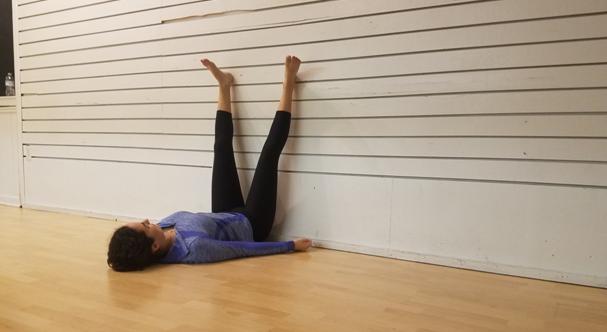Emotions can get stuck in our bodies, especially when we resist them.
We all do it: we feel sadness, anger, guilt, shame, and so on, and instinctively hide or run from the feeling.
Our resistance can be overt or very subtle, but either way, when we resist a feeling, we cannot release it from our psyche.
The first step to releasing an emotion is to sit with it and allow it. Allowing can be difficult, but it gets easier with practice.
An easier way you can allow these emotions to release is through the practice of yoga.
Yoga poses to release stuck emotions
I’ve put together eight of my favorite yoga poses for when I’m feeling emotional, so that you can practice allowing and releasing stuck emotions.
It includes poses which open the hips, which is an area that we often tense when we resist any kind of emotion, as well as a heart-opening pose, and several grounding and restorative poses to soothe the nerves.
Practice part or all of the following sequence whenever you come face-to-face with any uncomfortable emotions.
#1. Child’s pose (Balasana)
Begin with my favorite comforting, restorative pose. I like to practice child’s pose any time I need a moment to breathe and be with whatever arises.

Begin kneeling, with your big toes touching, and knees either together or as wide as your mat. Lower your forehead to the ground and extend your forearms in front of you. Your forearms can rest on the mat, as well. You may also rest the forehead on a blanket or block, if it does not reach the ground.
Remain in child’s pose for at least three deep breaths, or for as long as you like. Allow yourself to begin to relax into any thoughts or feelings that arise.
When you’re ready to come out, lift yourself up onto all fours into tabletop position.
#2. Low lunge with heart opener (Anjaneyasana variation)
From tabletop position, step your right foot forward between your hands, ensuring that the right knee is stacked over the right ankle (left is pictured). Curl the left toes under and walk the left knee back a bit until you come into a low lunge position.

Inhale and straighten through the torso, while simultaneously interlacing the fingers behind the back. Exhale, and gently pull the fingers back and down, to open the chest. Relax the shoulders away from the ears.
Allow the stretch to gently open the heart. As your heart is stimulated, blanket yourself in love, and allow love to seep into all of the dark corners of your mind.
Remain here for at least one more deep breath in. On an exhale, release, and lower the hands to frame the front foot.
Return the right foot back to a kneeling position. Then, step the left foot between the hands, and repeat on the other side.
#3. Wide-legged forward bend (Prasarita Padottanasana)
Come to standing, and step the feet out wide, pointing both feet straight forward. Inhale, and extend the arms out and up. Exhale and press the hips back, hinging at the pelvis, extending the torso forward and down into a wide-legged forward bend.

Grab opposite elbows, and relax the weight of the head over. Enjoy at least three deep breaths, allowing yourself to relax into the pose. Try to breathe slowly and smoothly, and for an added release, exhale with an open-mouth sigh.
The inverted nature of this pose will calm the nervous system, allowing a peaceful space to open up within you. Allow every emotion to enter and exit however it would like, simply resting in this space of witnessing.
The more you allow, the more you will release.
To come out, inhale, press into the feet, and bend slightly into the knees. Roll through the spine, stacking the vertebrae one at a time, until you return to standing.
#4. Garland pose (Malasana)
Stand with the feet just wider than hip width apart, turning the toes out slightly.

Inhale, and bring the palms together at the heart. Exhale, and begin to bend into the knees, slowly lowering into a squat. Once you lower all the way down, your heels may or may not lift off of the ground.
Either way, you may place your hands on the ground in front of you for support, or keep the palms together at the heart. Gently press the elbows outward into the knees for a stretch in the inner thighs.
Breathe deeply as you feel the pose’s grounding effect on your root. With each exhale, relax your hips and shoulders. Remain here for at least three deep breaths, but stay as long as you would like, as you notice a sense of stability underneath your thoughts and emotions.
#5. Extended puppy pose (Uttana Shishosana)
Come back to a tabletop position. Then, lower your elbows to the ground directly underneath your shoulders. Next, walk your elbows and forearms forward several inches toward the top of your mat.

Exhale, and rock your hips up toward the sky as you lower your chest and forehead toward the ground. Your forehead may rest on the ground (or on a blanket or block). Try to keep your hips aligned over your knees and relax your shoulders away from your ears.
Enjoy several slow, deep breaths as you rest into the pose. This pose will allow you to surrender any resistance to your uncomfortable feelings – simply breathe deeply and consciously feel any emotion that arises.
Gently press into the tops of the feet and walk the palms back to come back up to tabletop position. Sit back on your heels for a few breaths to rest.
#6. Pigeon pose (Eka Pada Rajakapotasana)
From tabletop position, bring your right knee up behind your right wrist (left is pictured).

Then swing your right ankle out towards your left wrist (it doesn’t have to reach your left wrist– just move it in that direction until you reach your first sign of tension).
Curl your back toes under, and walk the back knee back until you feel a stretch in the front of the hip. Once you get comfortable, exhale as you extend the heart forward and down (or, keep the torso lifted if your hips are very tight).
If your forehead doesn’t reach the floor, don’t force it. Rest on your forearms, stack the fists and rest the forehead on top, or rest the forehead on a blanket or block.
This is a deep hip opener, so breathe into your hips, and release any added tension with each exhale. We store a lot of stress in the hips, especially when we experience difficult emotions. Holding this pose for at least three deep breaths will begin to release all of the stuck emotions you’ve stored here.
When you’re satisfied, gently press your torso back up, being sure to support yourself with your palms. Curl the back toes under, and walk the back knee forward a few inches. Then, return to tabletop position, and repeat on the other side.
#7. Reclined twist (Jathara Parivartanasana)
Lie flat on your back, and bring your knees to your chest. (Optional – give yourself a big hug!)

Bring your arms out to a T position, with palms facing up. Exhale and lower your knees to the right into a twist. Relax your legs all the way to the floor; there is no need to hold anything in this pose.
You have options in reclined twist to turn the gaze opposite from your legs (gaze towards your left side in this case), and to extend one or both legs straight towards your hands. In any variation, relax your shoulders away from your ears and release any tension from your hips.
Stay in this twist for at least three breaths. This pose will allow you to release any tension from the spine, while easing your mind and body into relaxation, in preparation for our last pose.
To come out, lift the knees back up to neutral on an exhale. Then, repeat on the other side.
#8. Legs up the wall (Viparita Karani)
Finish the sequence in one of the most relaxing poses in existence, with your legs up a wall.

By allowing blood to flow in the opposite direction, you’ll calm the nervous system while allowing the nutrients of your practice to soak in.
Start sitting sideways against a wall, with one outer thigh touching the wall. Then, cartwheel your legs up the wall. Slide your sit bones forward until they touch the wall, then lay down on your back and rest your arms by your sides with your palms facing up.
If this position isn’t comfortable for any reason, you may also rest in corpse pose by lying flat on your back. I like to stay here (or in corpse pose) for at least five minutes, but you should stay as long as you want or have time to. This is the “do nothing” part of the practice.
Breathe slowly, relax all tension remaining anywhere in your body, and simply feel. Feel your emotions as they come up, allowing them to ebb and flow like ocean waves.
This is like a meditation, but you don’t have to think of it that way – you’re simply sitting and allowing. For more on sitting with your emotions, read Inner Body Meditation – Experience Intense Relaxation and Sleep.
Expand your yoga practice
This is only a brief introduction to poses that will help you to sit with and release those intense, uncomfortable emotions. Here are a few others that I suggest, all of which link to YouTube how-to’s:
Wherever you are in your practice, be careful not to fight your emotions. Remember that even if the emotions do not lessen immediately, it doesn’t mean that you’re doing anything wrong. Remember that these emotions are trying to teach you something and make you a more resilient person.
Always remember to be present. Everything is as it should be.
Also Read: 27 Short Morning Mantras For Strength and Positivity







